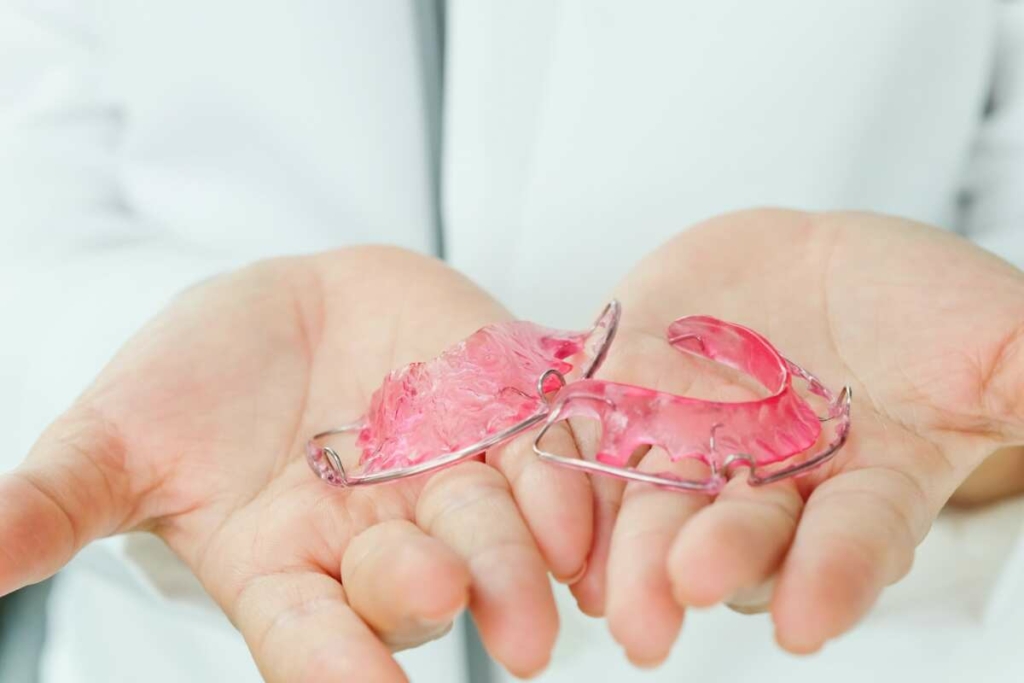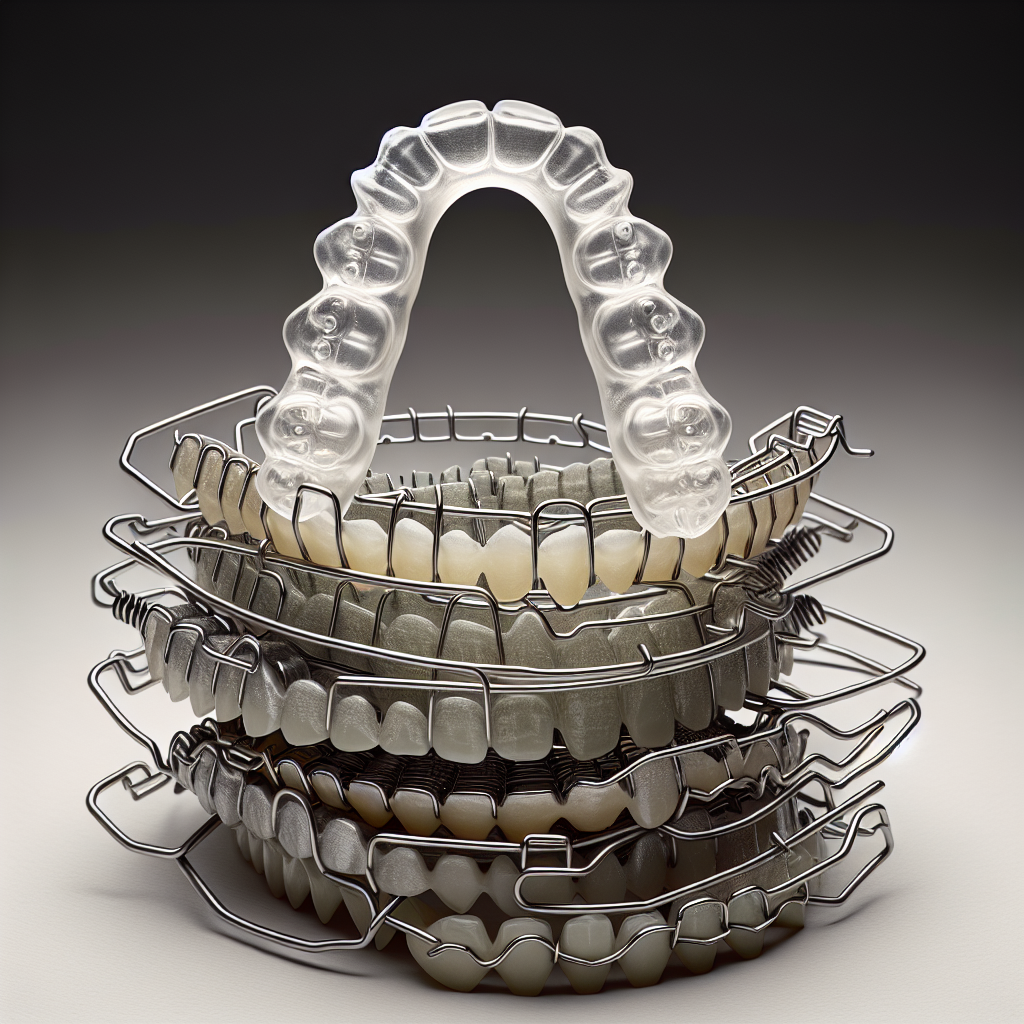Retainer types can be categorized into two main options to maintain that beautiful smile after braces: removable and permanent. Removable retainers, like the Hawley and clear plastic options, offer their own distinct advantages and disadvantages. The Hawley retainer, made of metal wire and plastic/acrylic, can be adjusted for comfort but may affect speech and be more noticeable. On the other hand, clear plastic retainers, such as Essix, Vivera, and Zendura, are molded to fit your teeth, virtually invisible, and less bulky. However, they may discolor and trap liquids.
As for permanent retainers, they are bonded to your teeth and can’t be removed easily, making them ideal for long-term use. However, they may require extra attention to maintain proper oral hygiene. With the cost of retainers varying depending on the type and materials used, it’s crucial to follow your orthodontist’s instructions to wear and maintain these important oral appliances, preventing any unwelcome shifts in your teeth’s alignment.

Types of Retainers
Retainers play a crucial role in maintaining the alignment and stability of your teeth after orthodontic treatment. There are two main types of retainers: removable and permanent. Each type has its own advantages and considerations. In this article, we will discuss the different types of retainers and what you can expect from each option.
Retainer Types 1: Removable Retainers
As the name suggests, removable retainers can be taken off and put back on as needed. These retainers are typically made of either metal wire and plastic/acrylic or clear plastic material. The two most common types of removable retainers are Hawley retainers and clear plastic retainers. Let’s take a closer look at each one.
Retainer Types 2: Hawley Retainers
Hawley retainers are made of metal wire and plastic or acrylic material. They are custom-made to fit the shape of your mouth and the position of your teeth. One of the benefits of Hawley retainers is that they are adjustable, allowing for minor corrections to be made if needed. The metal wire component can be adjusted by your orthodontist to ensure a proper fit.
However, it’s important to note that Hawley retainers may affect your speech initially. The presence of the plastic/acrylic material against the roof of your mouth may cause temporary changes in the way you speak. This adjustment period should only last a few days, and your speech will return to normal as you get accustomed to wearing the retainer.
Visibility is another consideration with Hawley retainers. Due to the metal wire component, these retainers aren’t completely invisible. They may be more noticeable when you smile or speak, especially if the metal wire is located on the front of your teeth. However, many people find that the benefits of Hawley retainers outweigh the minor visibility issue.
Retainer Types 3: Clear Plastic Retainers
Clear plastic retainers, also known as Essix, Vivera, or Zendura retainers, are an increasingly popular option. These retainers are made of a clear, molded plastic material that fits snugly over your teeth. One of the biggest advantages of clear plastic retainers is their near invisibility. They are practically undetectable when you wear them, making them an appealing choice for those who want to keep their orthodontic treatment discreet.
The molded fit of clear plastic retainers is another key feature. Each retainer is custom-made based on the impressions of your teeth. This ensures a secure and precise fit that effectively holds your teeth in place. The sleek design also means that clear plastic retainers are less bulky compared to other types of retainers. This can make them more comfortable to wear, especially during sleep.
However, it’s important to be aware of a few considerations with clear plastic retainers. Over time, these retainers may become discolored, particularly if they are not cleaned and maintained properly. Regular cleaning and following your orthodontist’s instructions for care can help minimize discoloration. Additionally, clear plastic retainers can sometimes trap liquids against your teeth, so it’s important to remove them before consuming any beverages other than water.
Preventing Shifting of Teeth
Regardless of the type of retainer you choose, the main purpose is to prevent your teeth from shifting back to their original positions. After all the hard work and time invested in achieving a straight smile, it’s essential to wear and maintain your retainers as instructed by your orthodontist.
Failure to wear retainers as recommended can result in teeth gradually moving out of alignment. This can undo the progress achieved through braces or other orthodontic treatments. To ensure long-lasting results, it’s crucial to follow your orthodontist’s instructions and wear your retainers consistently. The specific duration of retainer wear will vary depending on your individual case, but most orthodontists recommend wearing retainers full-time for the first few months, and then gradually transitioning to wearing them only at night.
Conclusion
Retainers are a vital component of orthodontic treatment, helping to maintain the alignment and stability of your teeth. Whether you opt for a removable retainer like a Hawley or clear plastic retainer, or choose a permanent retainer, it’s important to understand the advantages and considerations of each type. By wearing and caring for your retainers as instructed, you can enjoy the benefits of a straight, beautiful smile for years to come. Don’t hesitate to consult with your orthodontist to determine the best retainer option for your unique needs.

